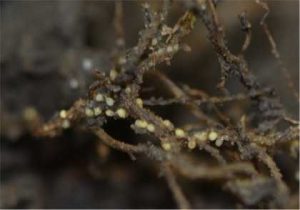Sudden death syndrome (SDS) is a disease of concern for soybean producers in Illinois and the surrounding region. The disease is caused by a soilborne fungus (Fusarium vilguliforme) that persists season to season in soybean residue and as resistant spores. Fields affected with SDS may have stand issues early in the season and develop interveinal chlorosis or necrosis (yellow or brown foliage with veins remaining green) after R3. Foliar symptoms resemble other diseases that can impact soybeans in Illinois, such as Brown Stem Rot, Phytophthora stem blight, and stem canker, virus, and in some instances, may even look similar to nutrient deficiencies and chemical damage.
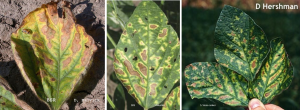
For this reason, it is important to not assume that plants with interveinal chlorosis are suffering from SDS. What are some tips for differentiating these diseases? First, go to the affected plant(s) and gently remove them from the soil. Inspect the lower portion of the stem and roots. The SDS pathogen will produce small, blue growth on the base of the stem and roots that may be visible with the naked eye or the aid of a hand lens. You may need to look at multiple plants before you see this disease sign, and depending on the environment and point in time when you are visiting the field. In my experience, you are most likely to see blue growth following a few days of rain, but that is not a rule.
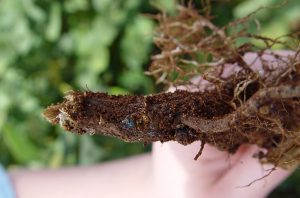
If you do not see blue growth, the next step is to look at the outside of the stem. Reddish brown lesions that start at the nodes and expand are typically indicative of Stem canker. A dark discoloration of the roots that persists up the lower base of the stem often signifies Phytophthora stem rot. On occasion lesions caused by stem canker can extend to the soil line and therefore can be confused with Phytophthora. Plants infected with Phytophthora will have few roots, as this pathogen causes a root rot. Roots should not be severely affected if stem canker is the causative agent.
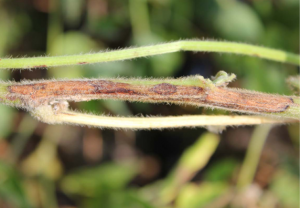
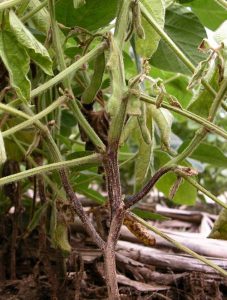
If you do not see any evidence of symptoms on the outside of the plant, the next step is to split the stem longitudinally. Brown stem rot will cause a dry rot of the internal stem that results in a chocolate brown, laddered appearance over time. Sudden Death Syndrome does not rot the center of the stem, but can cause a light tan/ brown discoloration at the stem base. This typically will not extend far up the main stem.

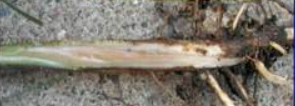
Other things to keep in mind, abiotic disorders tend to follow distinct patterns in the field. Diseases do not appear in squares, stripe, or blocks. If you observe symptoms following these patterns, you are not likely to be dealing with a disease, but some other factor such as chemical injury, nutrient misapplication, etc.
This year, don’t be fooled by foliar symptoms. Make sure you are checking the entire plant to ensure that you have the entire story. Proper management starts with proper disease identification.
There is an excellent resource to help you with distinguishing stem diseases of soybean can be found at the crop protection network.

